John Vig, Founding President, IEEE Sensors Council
IEEE had many sensor activities in the 1990s and earlier, mostly in its technical societies, but the activities had no focus. My main purpose in founding the IEEE Sensors Council was to create a sensor focus in IEEE primarily through the creation of the IEEE Sensors Journal and the IEEE SENSORS Conference.
In the mid-1990s, the director of my laboratory asked me and two other researchers to help him deal with a budget cut. He set a goal of cutting half a million U.S. dollars from the library’s budget.
At that point, my team quickly became educated about the economics of publishing. When we first saw the prices we were paying for subscriptions, we were absolutely astounded. One journal, for example, published by a commercial publisher, cost 27 thousand U.S. dollars a year, and this was in 1996!
A typical IEEE journal’s price was 20–30 dollars a year for members and a few hundred dollars a year for institutions. Many commercial publishers’ prices were in the thousands of dollars a year.
Upon learning this, I became determined to start an IEEE Sensors journal.
At about that time, I was elected president of the Ultrasonics, Ferroelectrics, and Frequency Control Society and started participating in Technical Activities (TAB) meetings. The first TAB meeting I attended took place in 1997 shortly after my lab’s budget cuts.
At this meeting, I asked fellow presidents: does your society have activities in sensors? More than half the society presidents answered yes. Therefore, I started organizing an effort to create a council devoted to sensors. Initially, most society presidents were reluctant to support the idea.
I argued that, as nearly every society has an interest in sensors, but we have no journal in the field, and we have no major conference in the field, the logical thing to do would be to create a council.
I presented a proposal to TAB in June 1998. The then VP of TAB, Lloyd A. (Pete) Morley, was supportive. He formed an ad hoc committee and appointed me to chair it. He asked us to propose a constitution and bylaws at the November 1998 TAB meeting – which we did. After a vigorous debate, TAB approved them. I returned the following February to propose the establishment of the IEEE Sensors Council. TAB voted nearly unanimously to approve this proposal too.
In less than a year from the time I first proposed it, we persuaded the society presidents to overwhelmingly support the council. Twenty-six societies, more than two-thirds in existence at the time, joined the Sensors Council. Subsequently, I was elected to be the first president of the Council and Vladimir Lumelsky was elected to be the first Editor-in-Chief of the IEEE Sensors Journal.
Issue 1 of the Journal was published in June 2001. It contained ten papers. The early issues received few submissions. We were concerned, but then, the December issue received 16 papers, and, Volume 2, in 2002, contained 79 papers. The journal was on its way. It grew “exponentially” in the years that followed, as shown below.
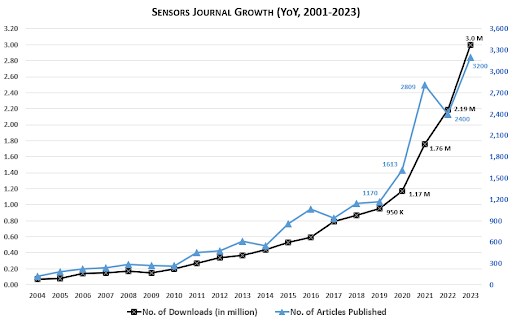
Number of downloads and number of articles published in the IEEE Sensors Journal from its founding to 2023.
By 2011, the Sensors Journal had published 3500 pages. During 2020, the journal published 15,000 pages and its articles had been downloaded 1.2 million times. In 2023, the Journal published 32,000 pages and had 3 million downloads, the 4th highest among the 131 IEEE journals.
The Council also started the IEEE Internet of Things Journal, another highly successful journal. It had 2.9 million downloads in 2023, the 5th highest among IEEE’s 131 journals. Also in 2023, the Council’s flagship conference had more than 1,000 attendees for the first time.
Innovation has been the hallmark of the Council. For example, the Council has been recording conferences and other presentations, and posting them on YouTube, for more than 10 years (>2K presentations posted; >300K views).
So, the main reason for establishing the IEEE Sensors Council, which was, primarily, to create a sensor focus in IEEE through the creation of an IEEE journal and an IEEE conference, has been achieved.
Councils have no members. Therefore, who is responsible for the Sensors Council’s successes during the Council’s initial 25 years? They are the thousands of volunteers who contributed their time and expertise; the editors, reviewers, authors, committee members… Thank you, volunteers!
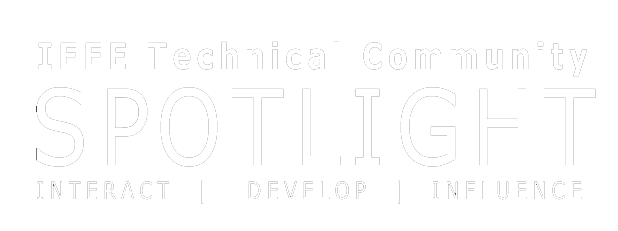

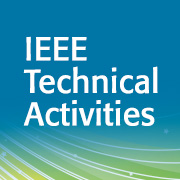

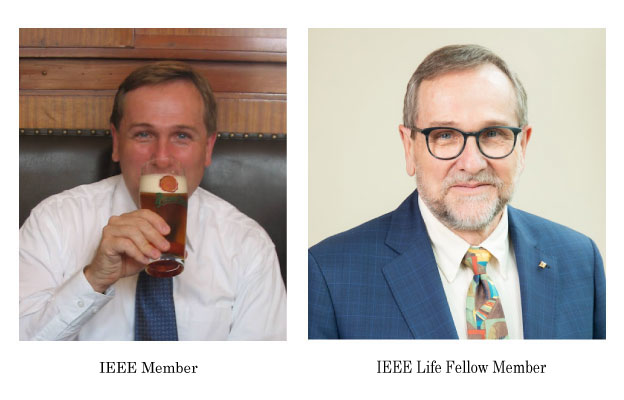

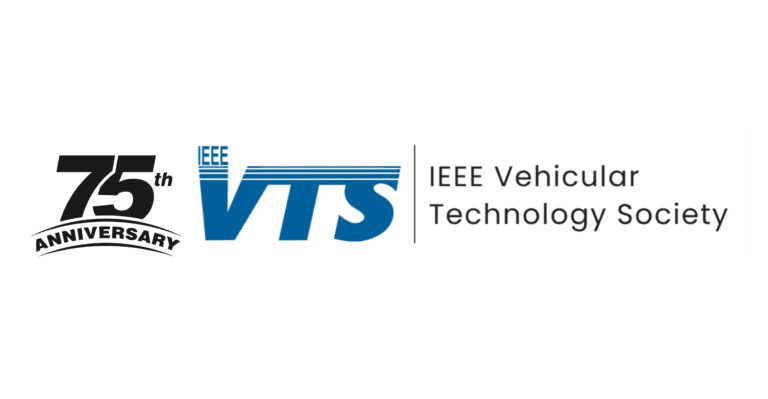
2 Responses
It feels like author of this article is a self-obsessed person who prefers to highlight their own story and history. The growth of Sensors Journal is because of hard work and planning of people like Krikor Ozanyan, under whose leadership the journal started to see the growth. The YouTube channel stands and is growing because of people like Anil Roy. Sadly, these persons are not mentioned even once. It is well known that the tremendous growth of council in recent years is because of many initiative by its leadership, particularly in recent years. Whilst last paragraph thanks unknown volunteers (thankfully), many known volunteers, other than the author of this article, contributed to success of IEEE Sensors Council and deserved to be named. Instead of their own history, few words by author about the known volunteers would have gone a long way. Not acknowledging their contribution is a missed opportunity.
– From IEEE volunteer, who likes Sensors Council.
Spotlight articles have a 500 word limit. Much info had to be cut out. What was NOT cut out is the last paragraph:
“Councils have no members. Therefore, who is responsible for the Sensors Council’s successes during the Council’s initial 25 years? They are the thousands of volunteers who contributed their time and expertise; the editors, reviewers, authors, committee members… Thank you, volunteers!”